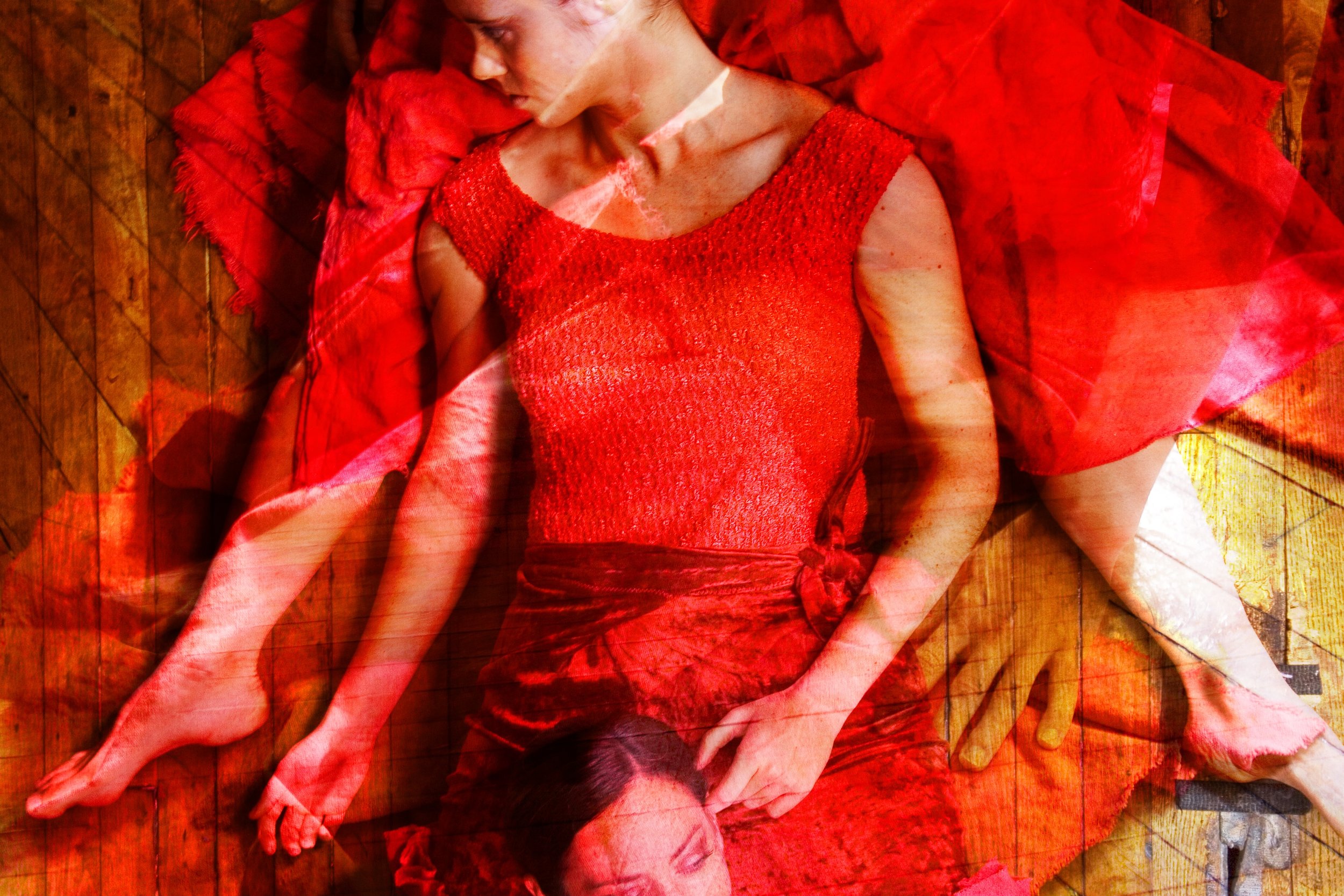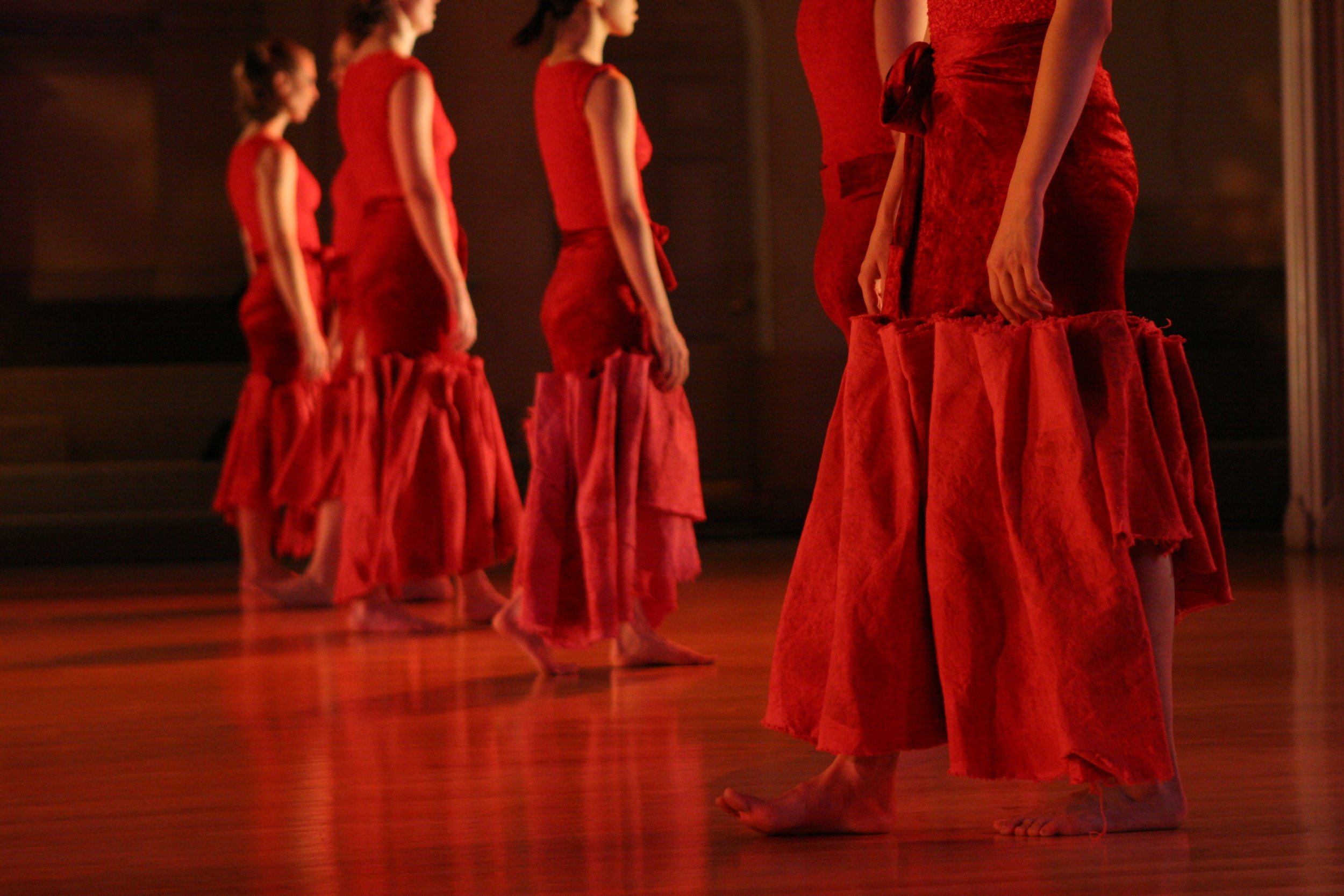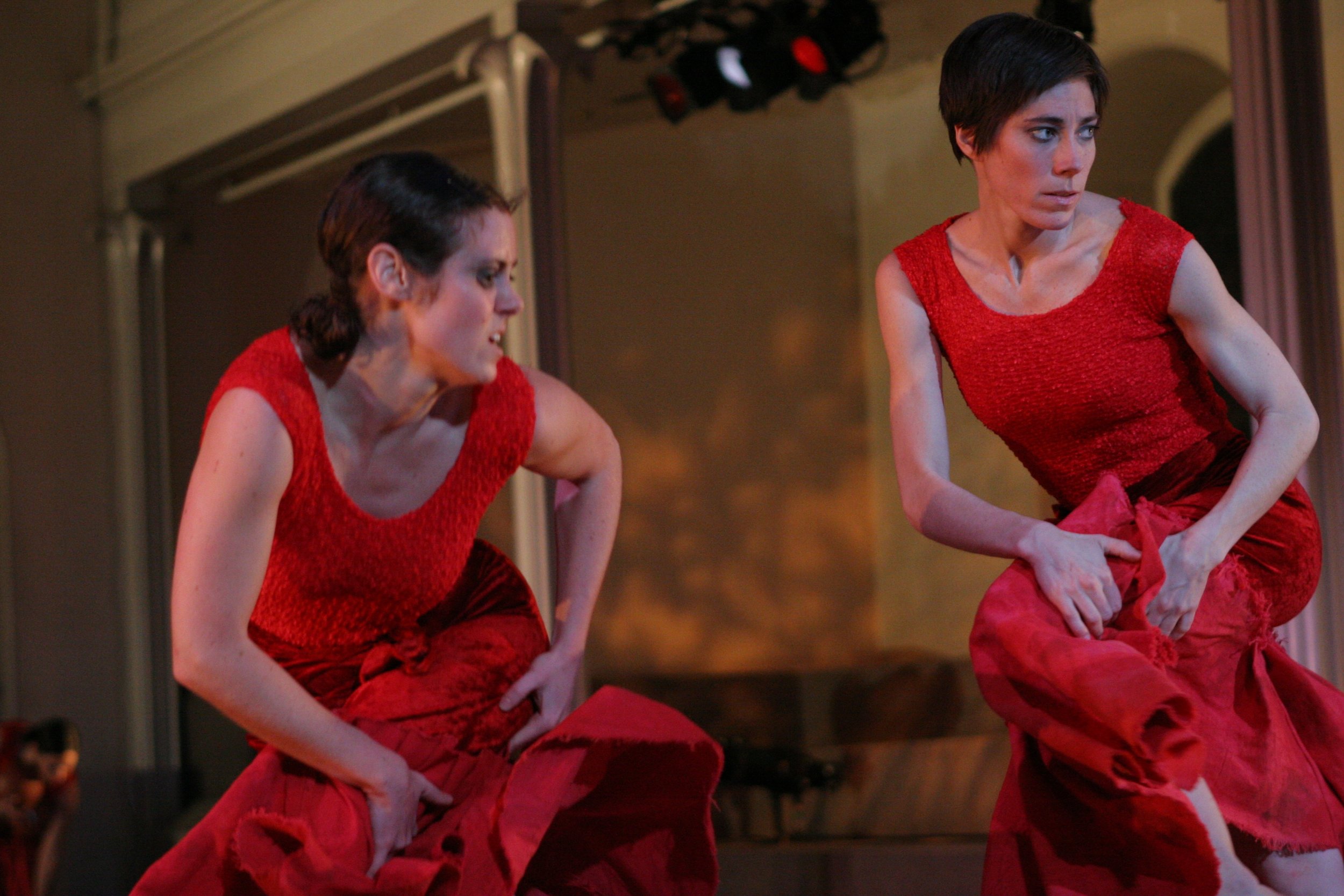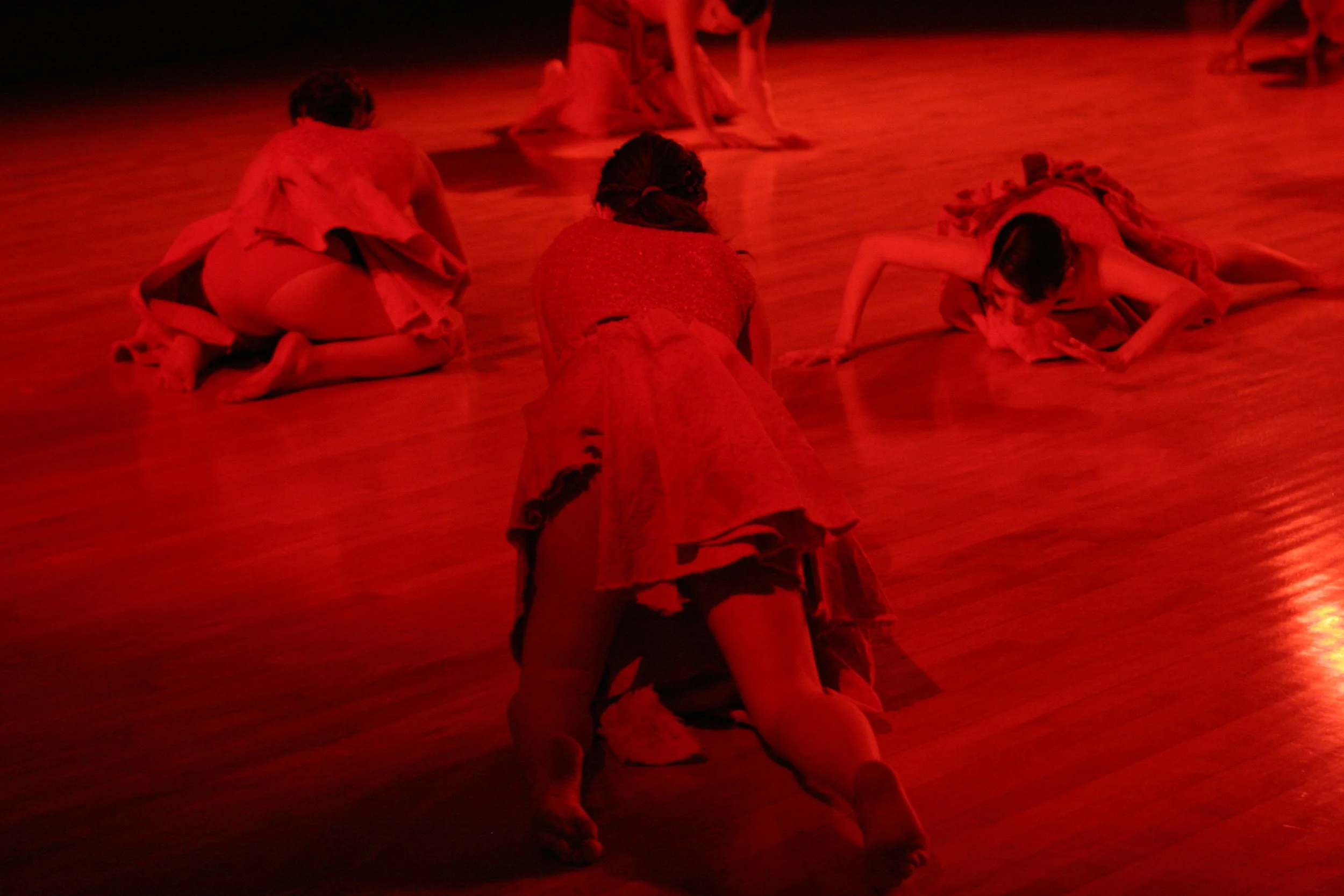








Red is a work of beautiful suffocation, a grand facade. Taking inspiration from Margaret Atwood's "The Handmaid's Tale" as well as the clean lines of St. Mark's Church, Red explores the machine of repression under the guise of supreme order and calm. At once aggressive and vulnerable, shrill and hushed, this timely piece exposes the chaos in the underbelly of every society. It recognizes every human being’s capacity both for violence and acts of tenderness. Featuring an all female ensemble of nine, Red is created and performed by Carrie Ahern in collaboration with Julie Betts, Donna Bouthillier, Christina Briggs, Jennifer A. Cooper, Eun Jung Gonzalez, Carolyn Hall, and Yoko Sugimoto. Composer Kristin Norderval and the dancers provide a live acoustic and electronic score, Naoko Nagata creates costumes, and Carol Mullins designs the lights.
Commissioned by and performed at the Guggenheim Works and Process (Sept 2005) and Danspace Project (Feb 2006)
photo: King Morgan

“Ahern's Red was a rich tapestry of densely layered images of pent - up ferocity... . her own striking investigation.”
-Sarah Maxfield, Culture Catch | Feb 2006
“Her (Carrie Ahern) ensemble includes some of the city's most interesting dance artists.”
-Jennifer Dunning, The New York Times | Feb 2006
“Red is a rich piece, full of unique movement. Creepy but gorgeous visual richness, music with primal vocals and stark simplicity, beautiful lighting design and strong performers... a dance feast.”
-Quinn Batson, offoffoff.com | Feb 2006
photo: Steven Schreiber

The New York Times review by Gia Kourlas
Red review by Quinn Batson
offoffoff.com | Feb 2006
photo: Steven Schreiber

Sarah Maxfield
CultureCatch.com | Feb 2006
For Carrie Ahern, red is a very scary color. Inspired by Margaret Atwood's The Handmaid's Tale, Ahern's Red was a rich tapestry of densely layered images of pent-up ferocity. For Ahern red represents oppression, aggression, and fear, and possesses power to overwhelm and consume. As the piece opened, one could hear only an eerie swishing sound, which was generated by the odd, sliding gait of ten pairs of feet approaching us from behind. In near dark, women in long, multi-textured dresses, with blacked-out eyes, marched monk-like to the stage. A light shone briefly bright, throwing an elongated shadow of the balcony railing onto the upstage altar wall as Ahern bolted down the balcony stairs to join the rest of the group onstage, knocking the other women to the floor like dominoes.
There was a certain voyeurism attached to bearing witness to this world. Throughout the work, the dancers took turns watching each other with sinister attention, as if to ensure a sentence would be carried out. The potential harm remained captive in the performance space and was amplified by the virtuosic sound design, which was deftly woven into the work. Kristin Norderval's design incorporated live singing mixed with pre-recorded sound, which was then also recorded and re-mixed to build a complex, ghostly score that fluttered between lullaby and scream. Just when we thought we had this grave, sinister world pegged, miniature basketballs rained down from the balcony, bouncing insanely and immediately exploding the restrained energy of the performance. The sports reference was a brief, anachronistic, zany, masculine intervention in what is otherwise an exclusively somber, female world. The respite from the thick gloom was welcome, yet the influence did not hold long. Gradually, the dancers came to rest, forming a stoic frame for the space in which they resembled statues in a Greek temple, as one woman gathered the basketballs to create a precarious, uncomfortable bed.
By the end of the work, the allusion to Atwood's novel took over. When Ahern kept closely aligned to the themes of the book, the effect was less fascinating than the spin-off world into which she drew us for the first two-thirds of the performance. The line between terror and angst is thin, and the reverential reference to Atwood that had initially inspired the work seemed ultimately to dissipate Ahern's own striking investigation.
photo by Steven Schreiber
